'I'm not a woman farmer. I'm just a farmer.'
It’s mid-May, and planting season is underway. Like clockwork, farmers are working in fields across Indiana — they’re easily spotted by the dusty clouds trailing behind their tractors.
On a field not far from Bloomington, a tractor makes laps sowing seeds for soybeans that will blanket the ground in lush green leaves in just a few months.
As the planter rounds the final corner of the field, it comes to a stop, framed by barely visible furrow lines that bring a sense of order to the natural world. It’s an image emblematic of Indiana — until the cab door opens.
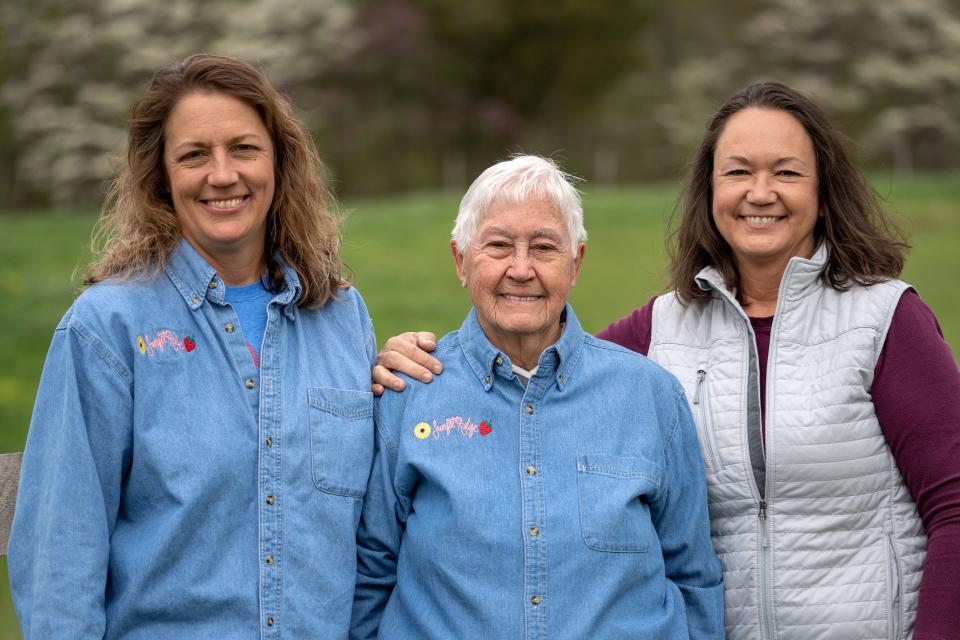
“It was always fun to watch people’s faces when I pull up,” said Doris Scully, a Hoosier farmer who grows corn, soybeans and cover crops on nearly 700 acres with her family.
Women in agriculture: Agronomist works extra hard to take 'femaleness' out of her interactions with farmers
Scully is among hundreds of women across Indiana helping to slowly erase the stereotype of farmers as older men in overalls. Women have always been involved in agriculture, but historically that role has been behind the scenes — things like keeping the books, running errands and bringing meals to the field.
Now, however, more are literally taking leading roles in the field.
Nearly one-third of the nation’s agricultural land is now farmed or co-farmed by women, according to the 2017 Agricultural Census, the latest federal data available.
That number holds true for Indiana. There are just over 94,000 farmers in the state, and close to 32,000 of them are women. More than half of those serve as the main producer.
But it hasn't always been that way — much of that shift occurred in just the last decade. The number of producers and female-operated farms in the U.S. increased by roughly 25% from just five years prior.
Women in agriculture: Two Indiana sisters follow in agricultural footsteps of their trailblazing parents
Heather Bacher, coordinator for a support organization called Women 4 The Land, knows that women are often “uncomfortable because it has been a ‘man’s world’ sort of environment.”
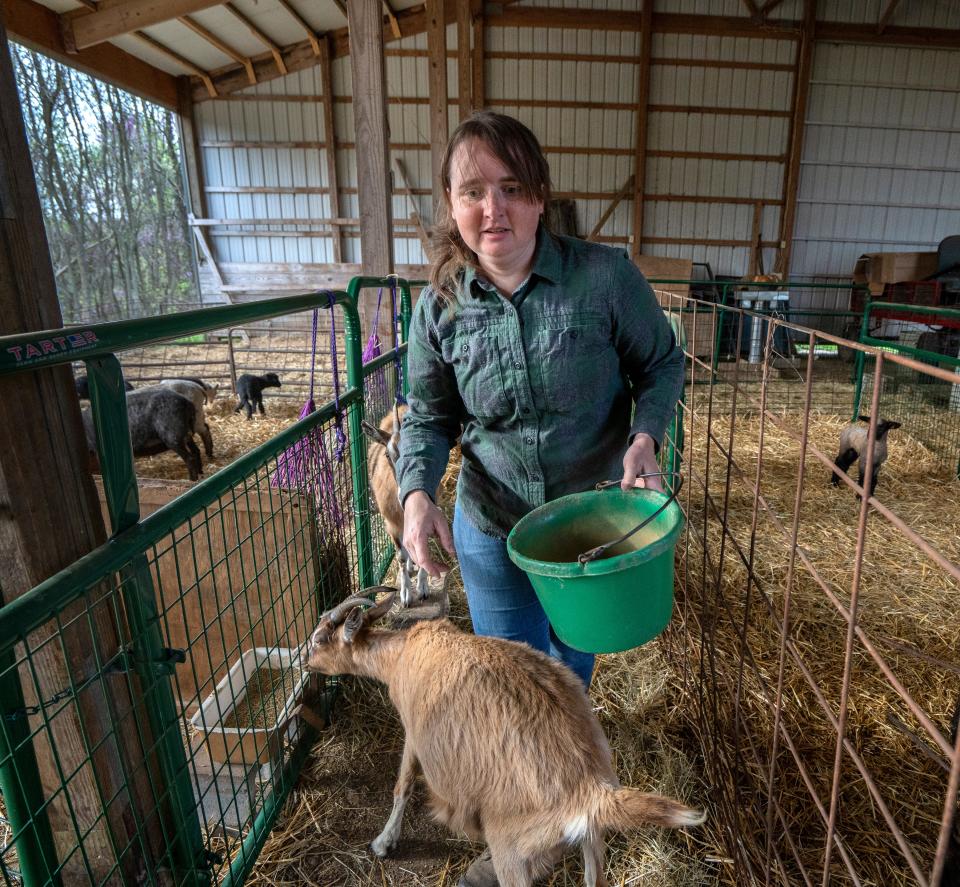
It's not the result of anything malicious. That's just the way it was. The labor and equipment demands created barriers. Still, it doesn’t have to be that way, according to Elise Koning, who raises lambs and grows Christmas trees with her husband on their Indiana farm.
“Why is it unusual in the first place to see a woman in agriculture when we’ve always been there?” asked Koning, who is listed as the main operator on her family’s farm.
Grown IN Indiana: We are known as a corn and soy state. But there is much more to farming in Indiana.
It's not just on farms where women are taking on greater roles in agriculture. They also are stepping into positions such as agronomists, conservationists with state and federal agencies, and educators in schools and universities.
IndyStar interviewed more than a dozen women working in key roles in farming and agribusiness across Indiana who shared their experiences in busting the stereotype and plowing new ground.
Scully said it’s becoming more common to find women helping farmers in a fertilizer supply store, or coming out to the farm to sell seed corn.
“When you see other women doing that, you think it’s possible and you think that you can start to do those things,” she said.
The shifting demographic has prompted more organizations and resources to empower women and help them find a place and a voice in agriculture. Now, many say it's time to take the “female” designation out of the lexicon.
“I’m not a woman farmer," Koning explained. "I’m just a farmer.”
'Where's your husband? Where's your dad?'
Jenny Vogel’s dad never let her mow the yard when she was growing up on their family farm in southern Indiana. She was allowed to bed the barns, “but he never let me do some of the other stuff because we were girls and he didn’t want us getting hurt.”
That mentality stuck with Vogel, who now farms with her husband. She knew it came from a place of love, but it also re-enforced the notion women shouldn’t — or couldn’t — work on the farm.
“It’s a generational thing," Vogel said. "A lot of these older men, they haven't seen a place for women in agriculture.”
Bacher acknowledges the supporting roles women have played on farms such as accounting and making lunch are very important, but she said they often didn't have the opportunity to be involved with day-to-day operations or making meaningful decisions.
Women in agriculture: Indiana agriculture student wants to be the role model she needed when she was younger
Koning recalls hearing stories of women walking into a feed store and being asked “where’s your husband?” or “where’s your dad?”
Isabella Chism, who chairs the Women’s Leadership Committee for Indiana Farm Bureau, has been on the receiving end of those questions. When seed salesmen made a house calls, they would immediately ask to speak with her husband — even though Chism and her husband share responsibilities on their farm outside of Kokomo.
In her role within the U.S. Department of Agriculture, Vogel saw the expressions on the faces of male farmers when she would pull up to their fields to provide guidance. They were looking to see if anyone else was getting out of the car or would ask to speak to the “guy in charge,” said Vogel, who works for the agency's Natural Resources Conservation Service, or NRCS.
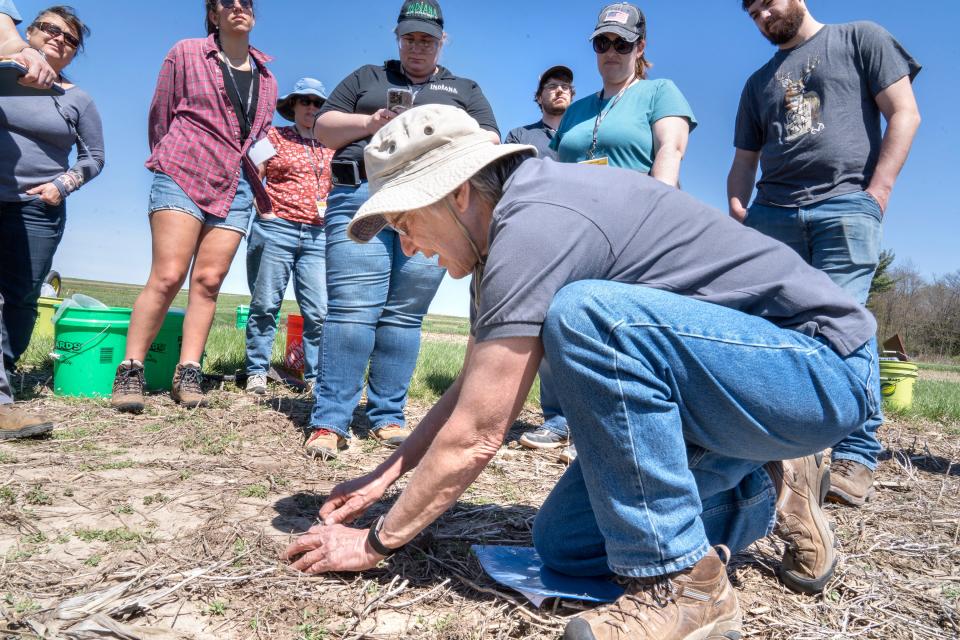
When Eileen Kladivko joined the faculty at Purdue University in 1982, she was the first female professor in the agronomy department.
“I know I had the sense to work a little harder to prove myself as a young woman as opposed to a young man,” Kladivko said. “I don’t think I was overly focused on being a woman, it was just that I wanted to do a good job.”
Plowing new ground
As the number of women across the ag industry has grown, many have been trailblazers in one way or another: the first female agronomist at their company, the first female conservation officer in their department, the first female operator (at least on the paperwork) in their family.
But it wasn't always easy.
The first women to gain full membership into the Future Farmers of America organization didn’t come until 1969 after the culmination of a 30-year battle.
Just three decades ago, fewer than 200,000 farmers across the country were women, according to Ag Census data. Though part of that increase may be due to changes in how data is collected and analyzed, it still represents major growth in the number of female principal producers.
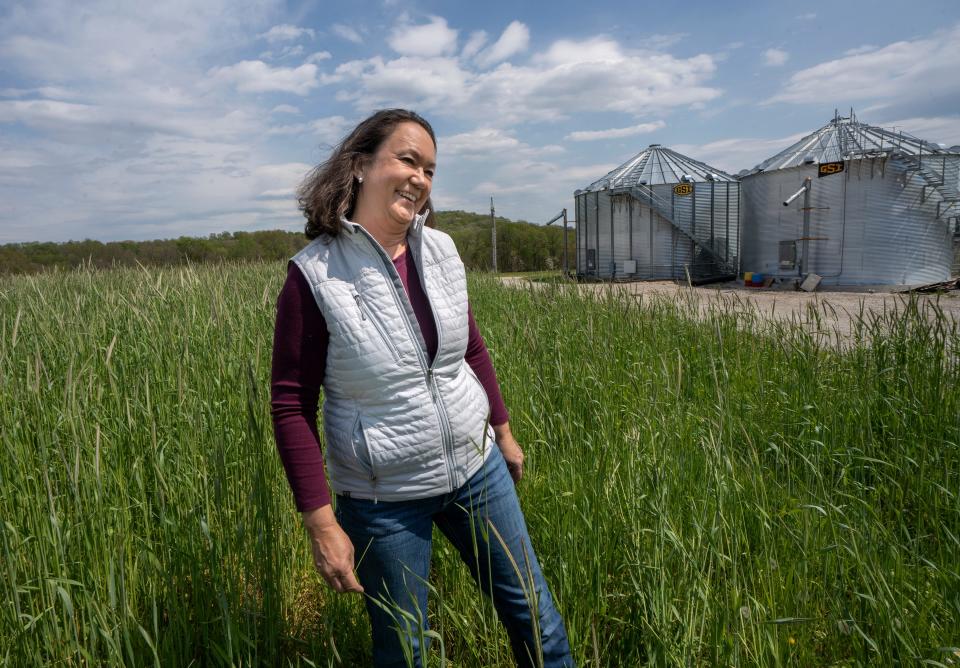
In another milestone, the number of principal women producers topped 1 million for the first time during the the most recent census.
“We have had a lot of years with this process and getting acclimated to women in agriculture,” Scully said. “And we have had a lot of good women to follow in this industry.”
On individual farm settings, however, there have been outliers.
Koning is the seventh generation on her farm, and women have been involved in every one, she said. They were role models without even realizing it, showing Koning a future path should she want to take it.
“It never occurred to me that this wasn’t something I could do,” said Koning as she walked the fields on her western Indiana farm and checked on the sheep and goats she fed earlier that morning. “It was the most natural thing in the world.”
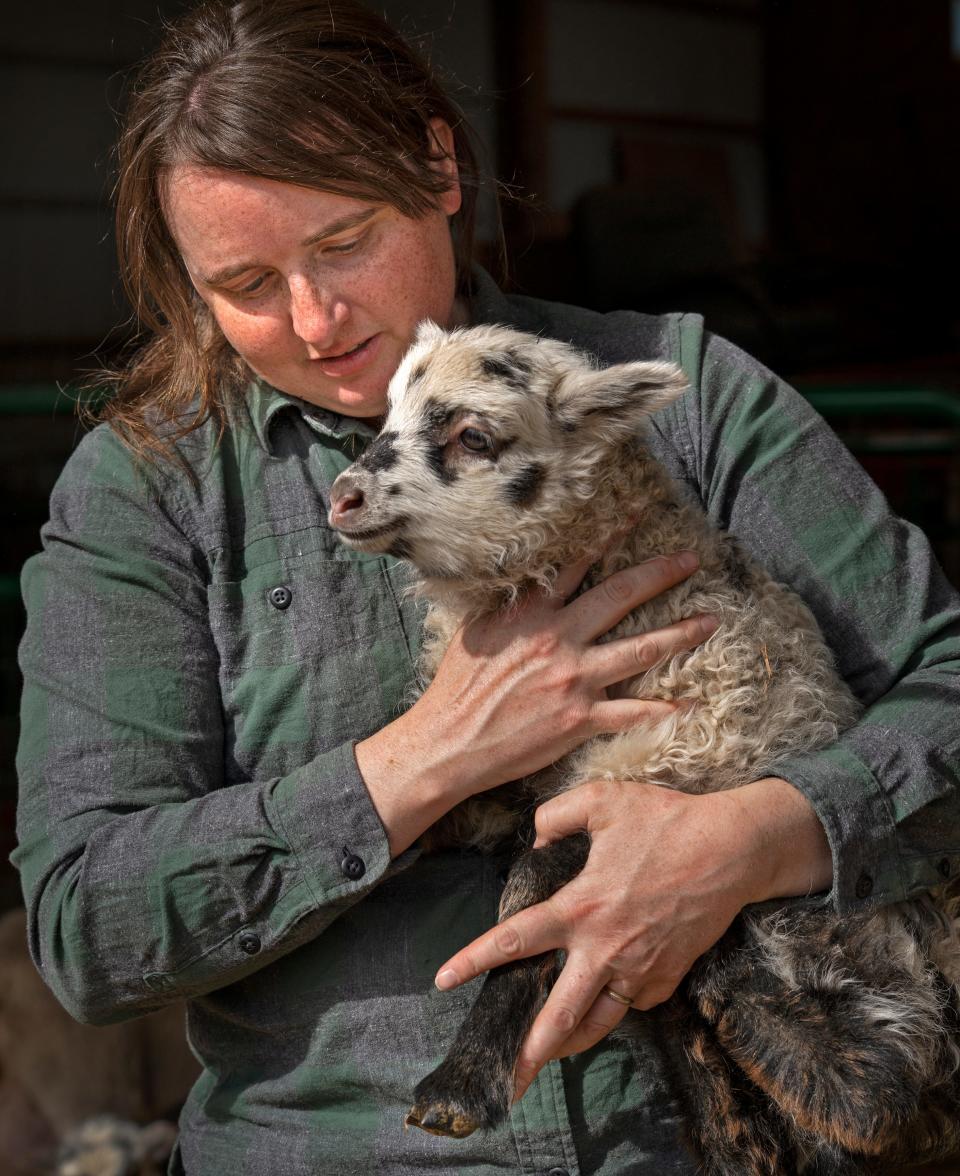
While it hasn't been as natural or easy for some, the potential and opportunities for women have continued to grow, said Bacher, the leader of a women ag group.
“The role women can play on impacting land has been there for much longer than we’d like to admit,” she said. “But now we are trying to empower them to have more of a voice.”
'Everyone has something to share'
While the official numbers show only about one-third of Indiana farmers are women, Bacher and others expect that number is higher — with as much as half of the land being owned or co-owned by women.
The transition of farmland across the country is one of the biggest shifts in agriculture in recent decades. The average age of farmers has risen in each USDA Ag Census since 1982, and now is closing in on 60 years old. As farmers get older, the question of what will happen to their land and who will take over lingers.
That was the birth of what became known as learning circles.
Such transitions were the impetus behind the organization that Bacher works for. It began about 15 years ago in Iowa. The goal was to reach women who were inheriting land from spouses or parents and were not well-connected or prepared and didn’t know what to do.
“The idea was to figure out how to reach women and empower them to learn about conservation and how to care for the land,” she said.
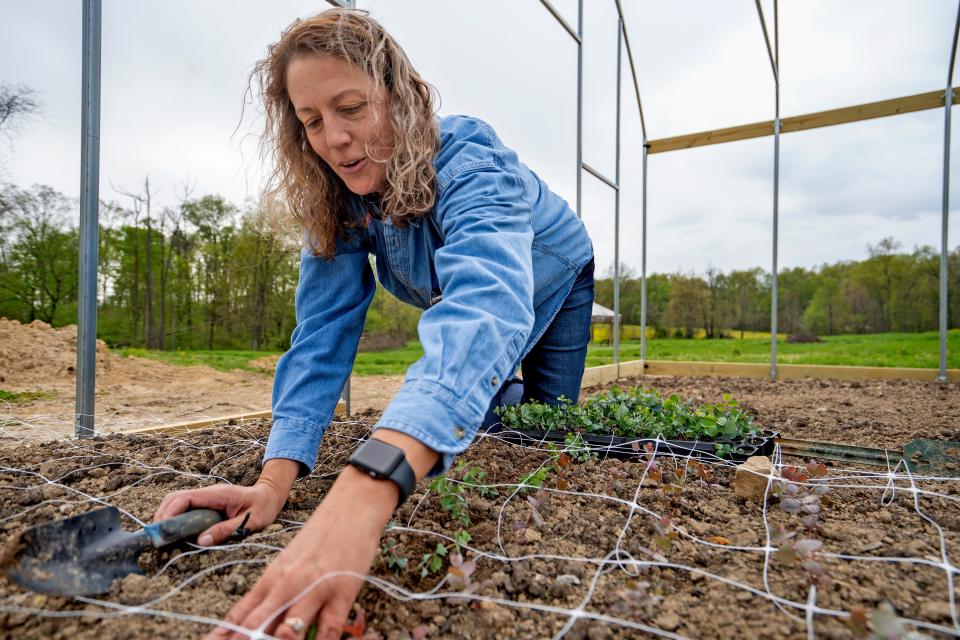
The learning circle format has expanded to other states and came to Indiana 10 years ago. It gathers small groups of women — about 20 at a time — together to learn from both research experts like Vogel or Kladivko and from each other.
“We literally sit in a circle together and just have a discussion,” Bacher said. “The idea is that everyone has something to share and something to learn.”
Chism, who heads the Indiana Farm Bureau’s Women Leadership Committee, said it is amazing to see the change in female landowners and farmers after events like these and other workshops.
“They come out different women,” she said. “They stand taller and seem more confident.”
They are more comfortable asking questions of their partners, making decisions or asserting themselves when communicating with whoever may be leasing and working their land.
Social media about and by women in agriculture also has been key, Vogel believes. Before, women could only draw reference from the operations they saw directly around them.
“My mom, for example, didn’t have the internet or that expanded social group to learn that this women elsewhere was running a cattle herd on her own,” Vogel said. “But now we have all these different women with blogs or an online presence, and that makes a difference.”
Challenges in clothing and equipment
Despite the advances made by women, Koning believes the stereotype of men in overalls persist. Koning said she loves overalls, but that’s not all that farmers wear. In fact, she said, it can be hard for women to find the clothes they need.
“When I go to a farm store, I can’t find clothes that fit me. I’m wearing a men's coat, coveralls and boots right now,” Koning said. “There are challenges in clothing and equipment, those are the two biggest challenges I’ve encountered in farming.”
While the equipment had gotten more accessible, she said she still has to think differently with how she moves things around.
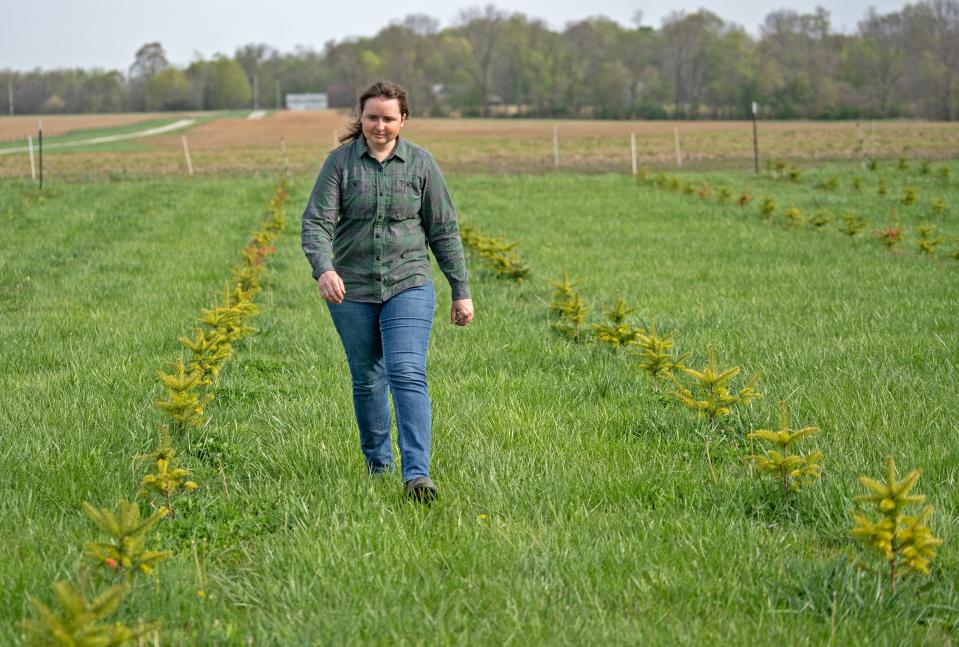
Other barriers, such as access to land as well as financing, can still be a problem, but state and federal programs are helping address those and other gaps.
Female producers are more prevalent on smaller farms compared to large-scale or industrial operations. Many of them also operate farms as a partner, only 13% are the sole operator. Often times that partner is a husband, sibling, child or close friend.
But it’s the fact that they are co-farming, an equal partner in making decisions, that really shows the progress, Vogel said.
In 2017, female-operated farms sold $148 billion in agricultural products, including crops and livestock. Those farms accounted for 38% of total U.S. ag sales, according to the census — more sales than their segment of the ag population, by a smidge.
Still, women have had to work hard to claim this space.
Both Vogel and Scully as NRCS officers and Betsy Bower, an agronomist, said they had to earn the trust of farmers when they began their positions around three decades ago. Part of that was because they were young and new to their positions, they said, but the fact they were women made the climb just a bit steeper.
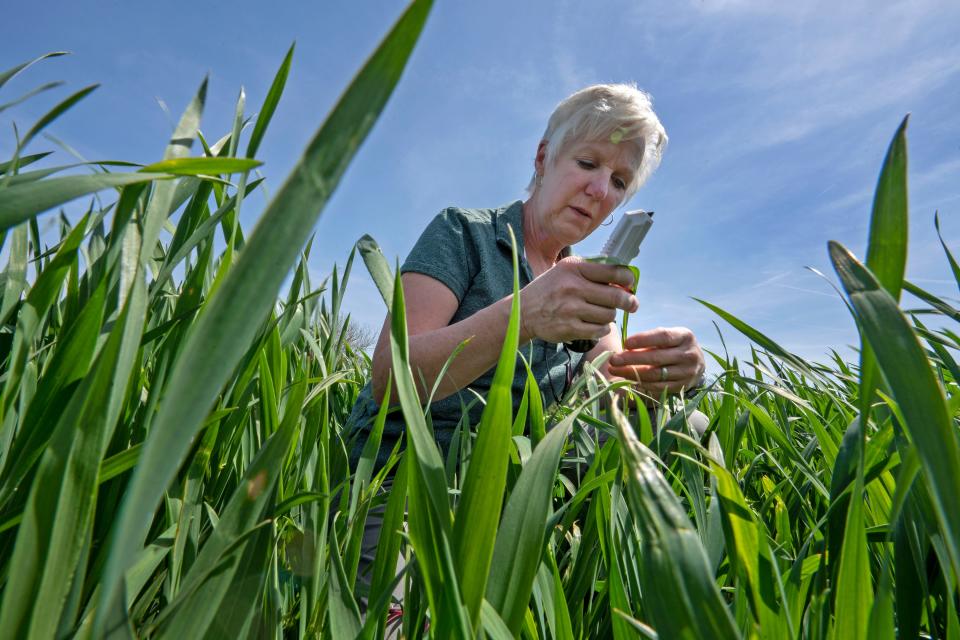
Bower said it took a few years for farmers to realize she knew her stuff and accept her. But now, she gets calls from across the state seeking her expertise and guidance.
“It’s showing up, it’s being there, and it’s helping them think through and solve their problems,” she said.
Bower said there are more female agronomists and crop specialists at her company, Ceres Solutions Cooperative, than ever before. And Vogel said that many of her colleagues in the various NRCS agencies are women, a big change from when she started.
Women have found their voice and the industry is listening, according to Tami Ketchen, the Indiana state director for FFA.
“Those earlier ladies came in when there was nothing,” she said, “and they had the bravery to say ‘I’m going to sit at this table.’”
'Just a given' in younger generations
While women who have been in agriculture have seen this shift over time, younger generations almost think nothing of it — and that’s a good thing, according to Kladivko, the Purdue professor.
When she first started teaching in the 1980s, her classes were mostly filled with men. But now, her classes as well as soil testing trainings she does for NRCS are “often half and half or actually even more women than men.”
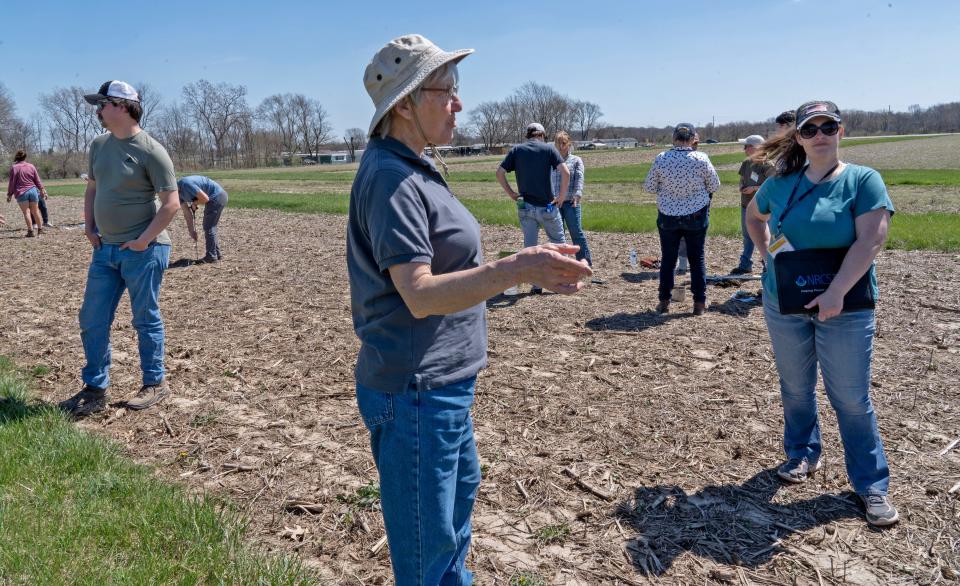
Kladivko hopes she has been a positive influence for all her junior, senior and graduate students. That includes normalizing the idea of a woman in a position of authority in agriculture. And she's noticed a shift in mindset.
“It’s just a given that there will be a mix of men and women in their classrooms and the industry at large,” Kladivko said. “We have a mix and we work together and that’s just how it is, it’s like it’s not even thought about.”
Gracie Lee said she barely thinks about it. The Winchester native is taking a year between graduating high school to serve as one of seven Indiana state reporters for FFA before attending university next year. She is planning to go to Purdue for ag education — she wants to teach young people about agriculture and who can do it.
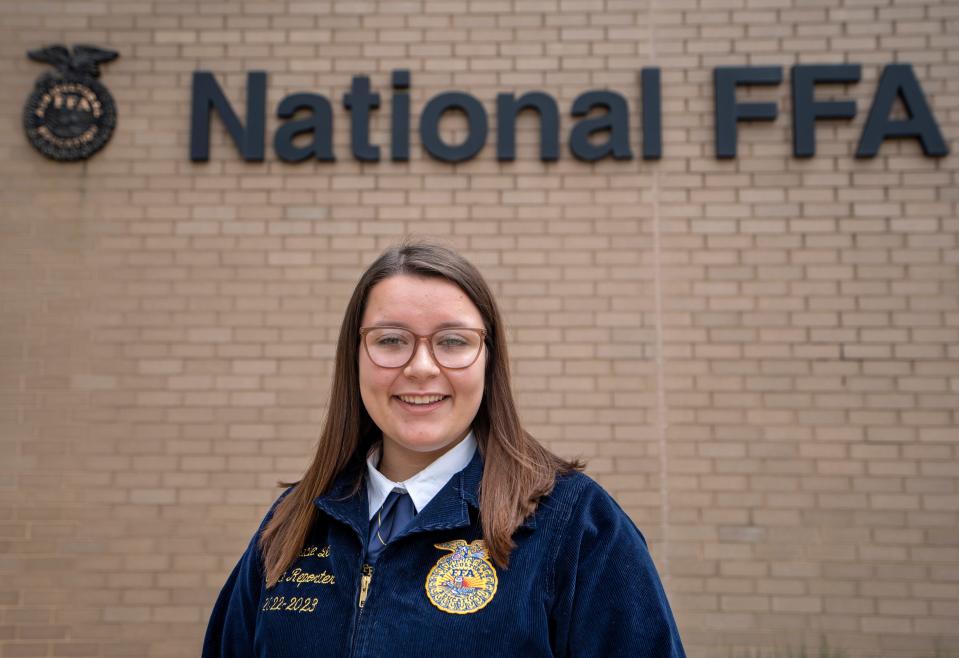
Despite growing up in rural Indiana, she doesn't come from a farm family. But it was all around her, and she got hooked. Still, it wasn’t until she joined FFA that she found role models and felt accepted by her peers, regardless of gender.
“I genuinely think it’s important to have traditional farming and women making decisions on the farm,” Lee said, “but also to see women in other fields that people don’t typically think of when they think about ag.”
'We need men and women together'
Indiana Lt. Gov. Suzanne Crouch, who oversees the state’s Department of Agriculture, said women are now going a step further and taking on leadership positions and companies and organizations.
Take Chism at Farm Bureau, Rebecca Joniskan who leads the Indiana State Poultry Association or Karen Plaut who served as the Dean of the Purdue College of Agriculture until last year. She left to take a higher position within the university.
“It’s been a male-dominated field in the past, but now we are seeing women rising to the top and opening doors,” Crouch said. “Women are making their own opportunities to a certain degree and have come to the realization they can compete in this industry.”
Agriculture is not alone, gender norms are crumbling in a variety of fields traditionally dominated by men: engineering, building, medicine, teaching, public office, etc.
Still, Crouch and others believe there is still room to bring more women into the agriculture fold and to strike a balance. In fact, she said it’s crucial for the future of farming — “Whether they are men or women, they are the heartbeat of Indiana.”
While the transition of farmland is already underway, it is only expected to increase. In the next two decades, it is estimated that as many as 350 million acres of farmland across the country will change owners. One report predicts that women may own as much as two-thirds of this transferred farmland, according to Bacher.
Crouch said she sees this as a benefit that helps the state keep more of its family farms.
"It’s important we continue to have family farms in Indiana that aren’t gobbled up," she said, "and women can fill that gap and help keep the family farm system in Indiana viable and thriving.”
Chism agrees that continued transformation is needed to secure agriculture’s future. As the number of farmers continue to shrink and their age trends older, she said it’s key that young people get involved.
“We need men and women together, different ages together, different types of ag together,” Chism said. “We can do better and adapt easier with all those different experiences at the table.”
Call IndyStar reporter Sarah Bowman at 317-444-6129 or email at sarah.bowman@indystar.com. Follow her on Twitter and Facebook: @IndyStarSarah. Connect with IndyStar’s environmental reporters: Join The Scrub on Facebook.
IndyStar's environmental reporting project is made possible through the generous support of the nonprofit Nina Mason Pulliam Charitable Trust.
This article originally appeared on Indianapolis Star: Women in ag are erasing the image of farmers as 'old men in overalls'

